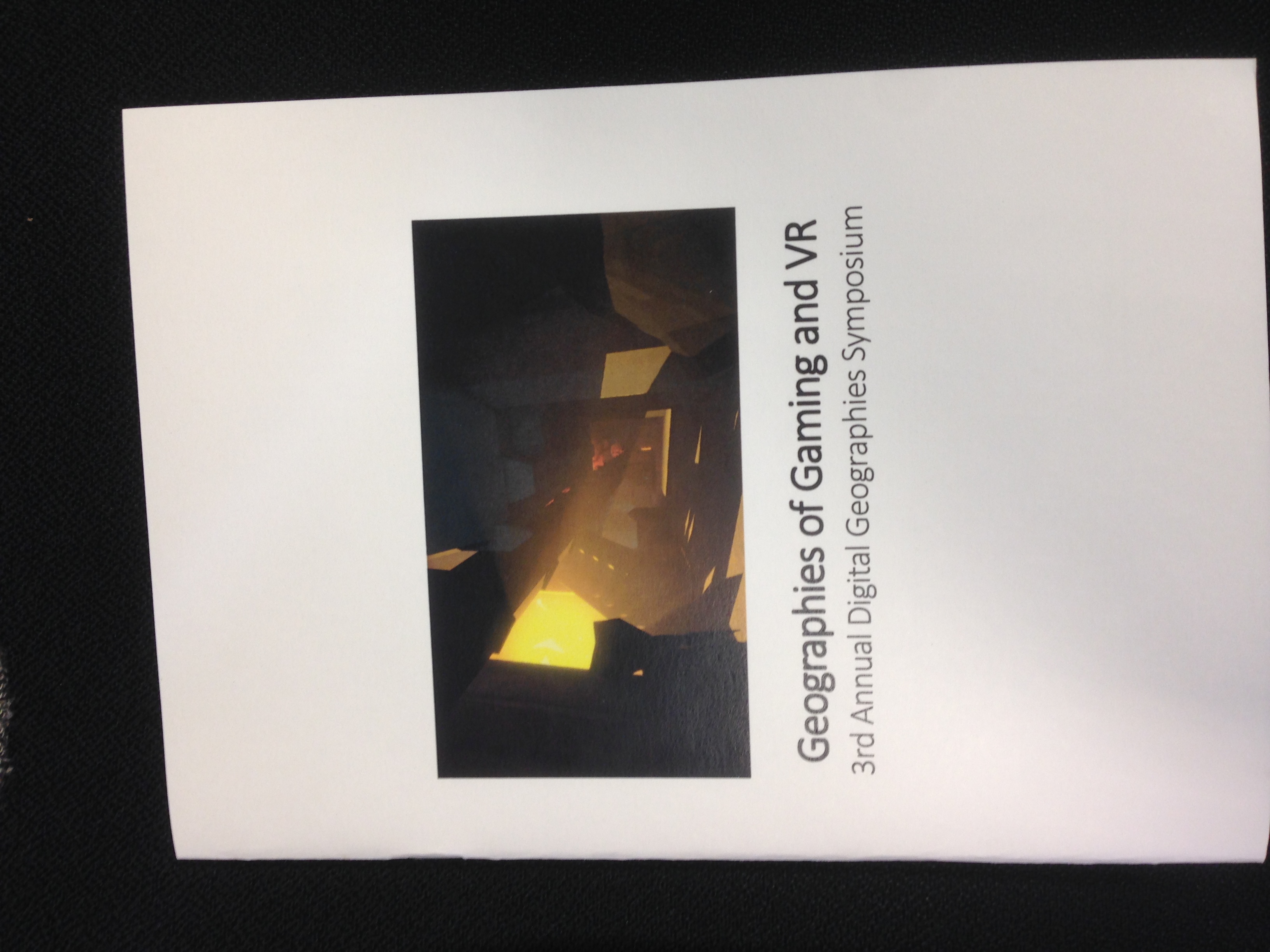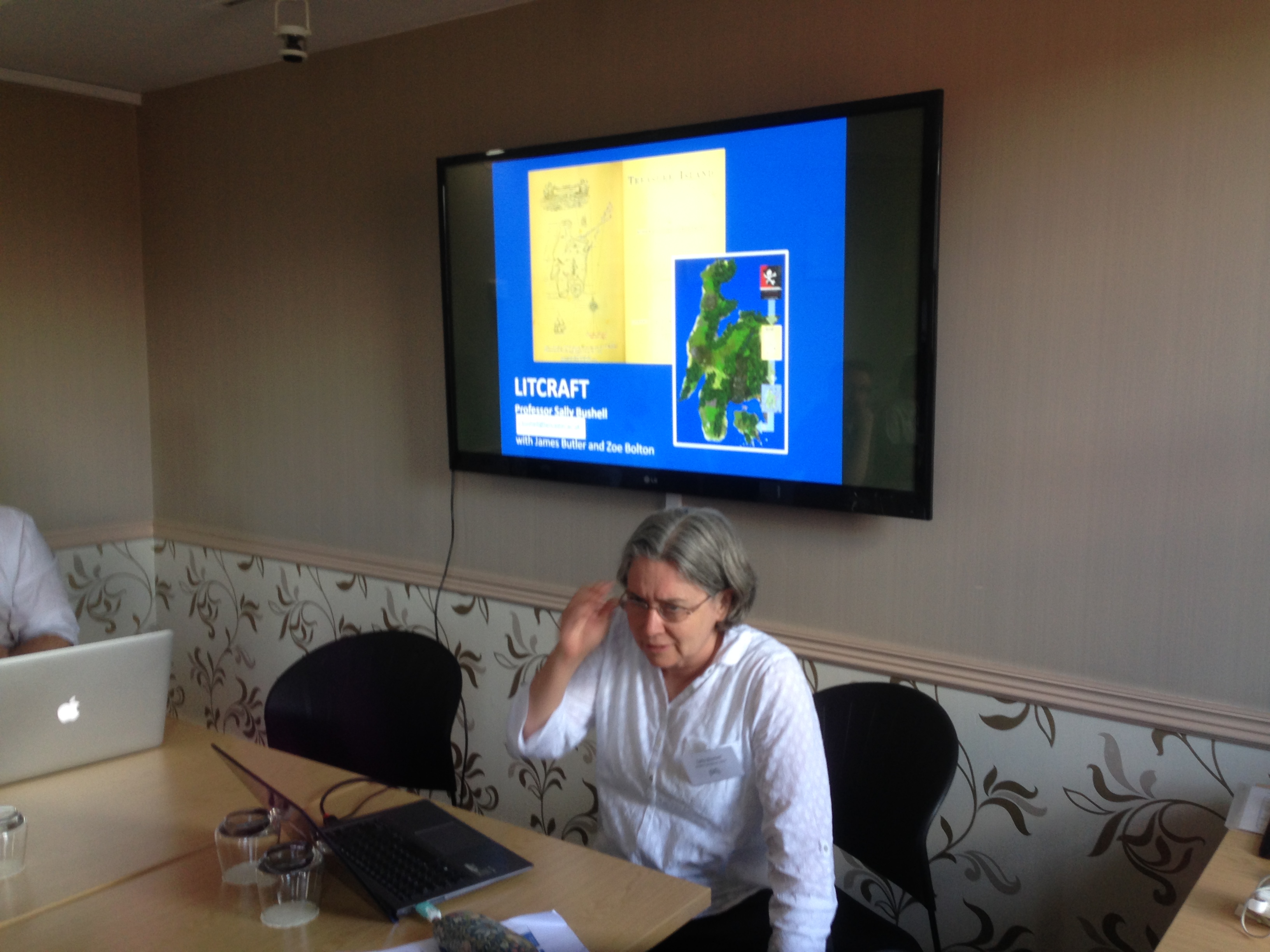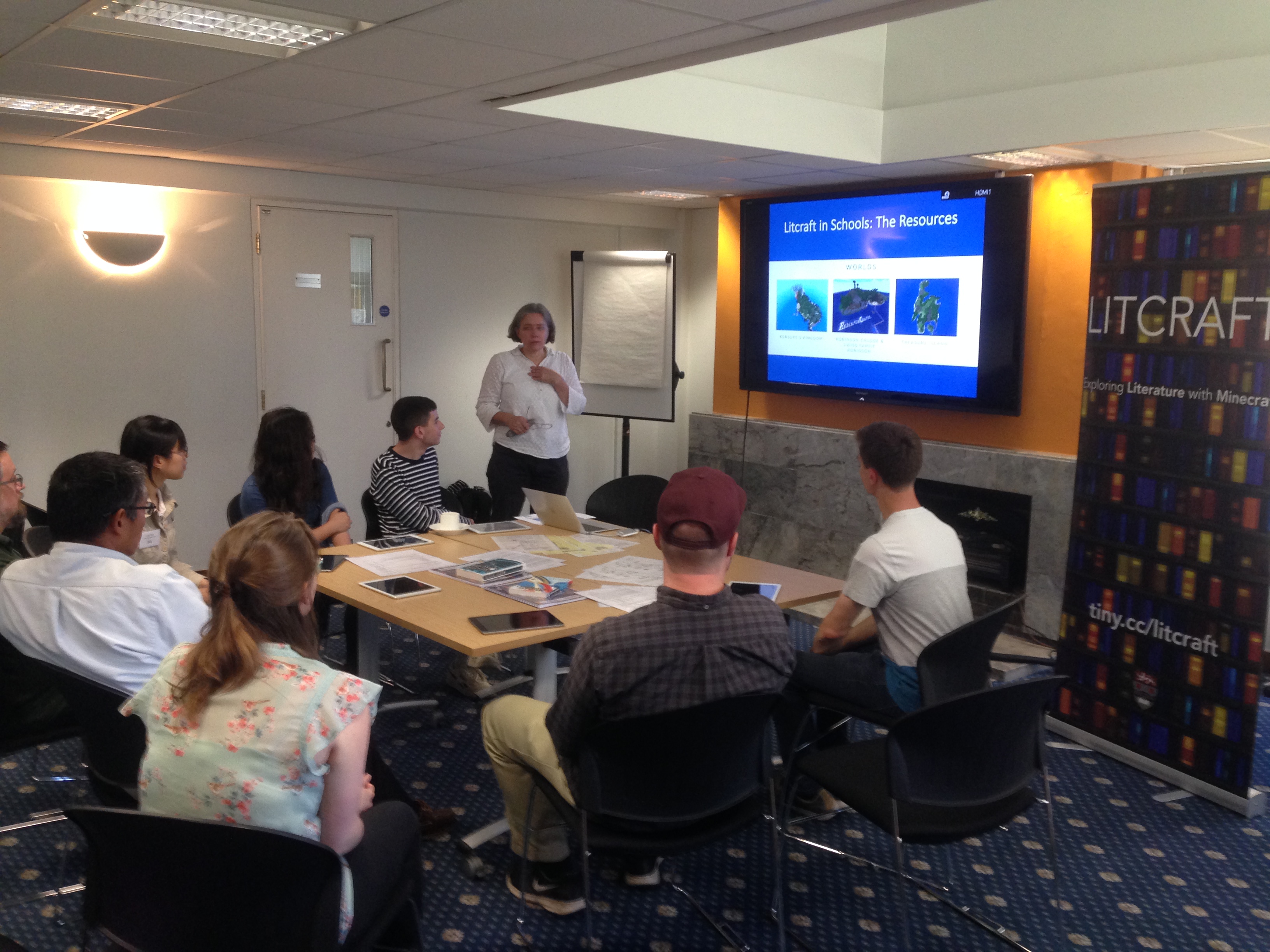Literary Mapping : Map of the Month (Feb 2020)
Feb. 5, 2020 | james | Map of Month
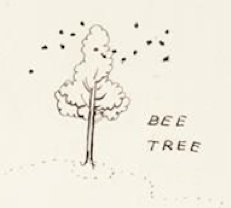
For the first-ever entry in our “Map a Month” blog post I thought long and hard, but in the end decided to go back to my own origin points in children’s classics. I think it is these maps lurking deep in my psyche that pulled me into this area of research as an adult. It’s hard to put your finger on why they evoke such strong feelings. Something about the visualization of the literary world, the sense of fully losing yourself in it through the map. For whatever reason these maps lure me in. They did as a child and they still do now.
The map for Winnie the Pooh (1901) is the iconic map from Children’s Fiction and it perfectly suits the text to which it corresponds. Figures are drawn in miniature as pictograms and each space locates them and relates to events from the episodic narrative: "THE SANDY PIT WHERE ROO PLAYS"; "WHERE THE WOOZLE WASNT". The map thus partly functions as a collective image of the contents of the book and works at a double level for adult and child reader. We might imagine a young child pointing to elements within the map that relate to particular stories rather than necessarily using it to map onto the space of the book as a whole. The adult, though, is more likely to be attuned to the underlying spatial politics of, say, Eeyore's marginalization in a "Gloomy Place . . . Rather Boggy and Sad" or Pooh and Christopher Robin's centrality.
At the bottom the map is signed: "Drawn by me and Mr. Shepard helpd". Here the illustrator (E. H. Shephard) adopts the persona of Christopher Robin as map-maker. This kind of slippage between adult/child and the making of the map is quite common (something similar happens in Arthur Ransome’s books). Deliberate misspellings on the map ("piknicks; "Raletions") are also interesting since the young child (to whom the stories are being read) will not register them at all, while the adult reader will know that they are incorrect. So, they "authenticate" Christopher Robin as maker of a simplistic map, but do so only to a reader who will immediately see through the device.
-Sally
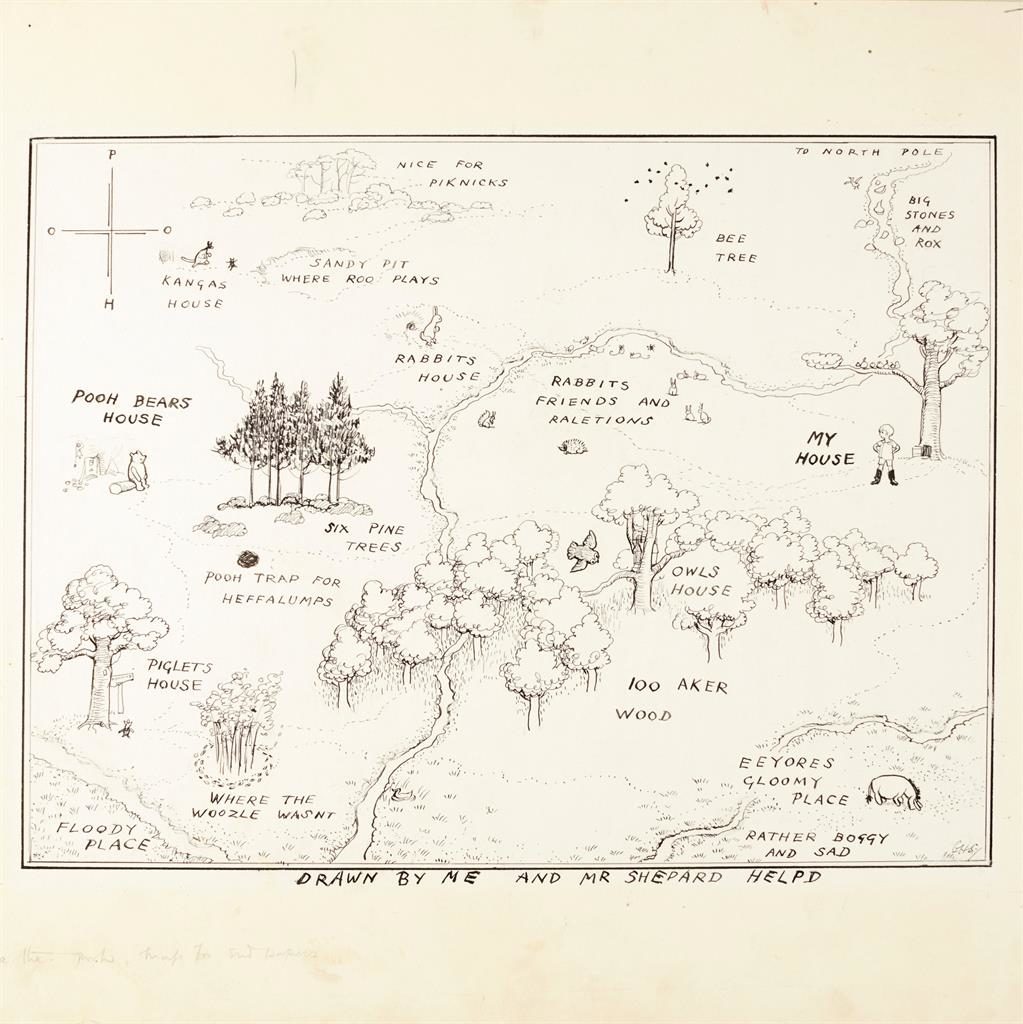
[Image of original endpaper sketch for Winnie The Pooh (1928) sold for £430,000 from: https://www.sothebys.com/en/articles/winnie-the-poohs-original-hundred-acre-wood-unseen-for-50-years]
Litcraft in Libraries - Another New Region, 12 August 2019
Aug. 13, 2019 | james
The team is delighted to welcome another library region into the Litcraft fold: Surrey!
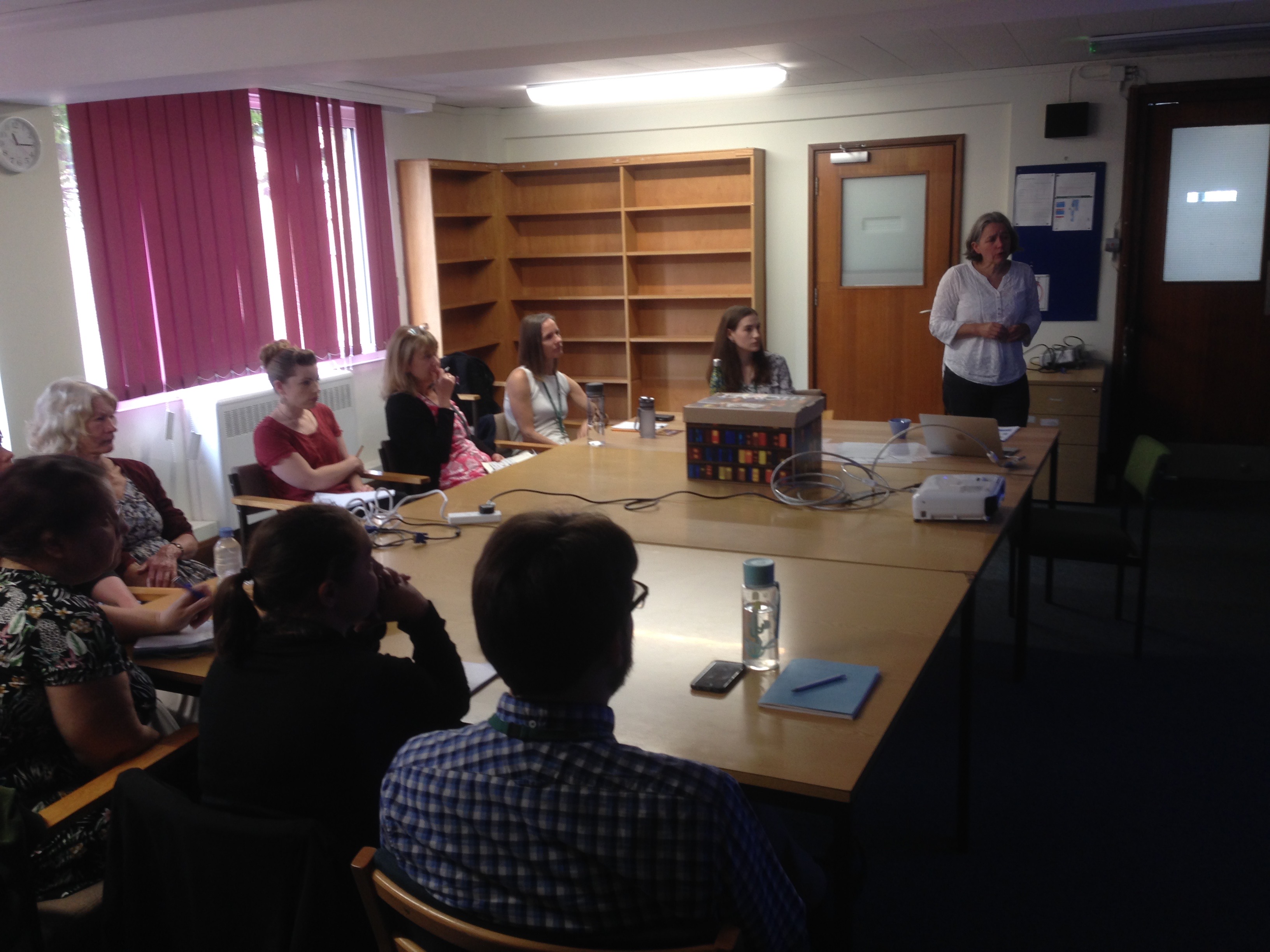
Sally and James ran another well-received introductory workshop, and the librarian team really got into the concept - from having very little experience with gaming in general to wanting to storm ahead to the next modue chests, and espousing ideas for new potentialmap builds - it was the exact transformation we love to see!
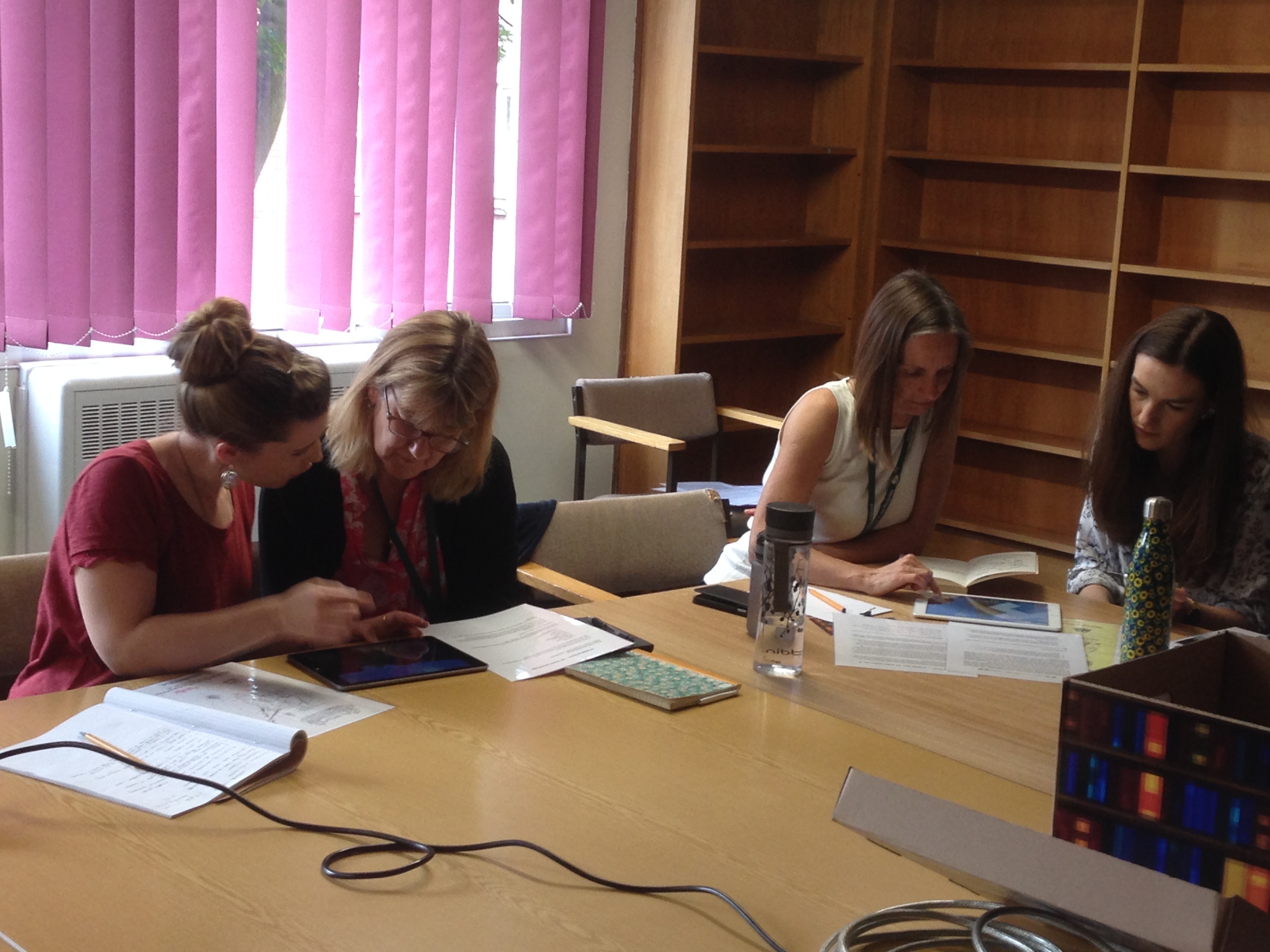
Thanks to Impgen Foley for initiating this new partnership, and enthusing about its potential with the rest of the Surrey digital innovations team. Happy travels, latest Litcraft box!
Accenture-produced Leaflet
July 22, 2019 | james
Meant to post a copy of this a few months ago, but things have been rather hectic as of late (lots of news to share soon!), but when Sally and Becca attended the Accenture outreach event in Dublin, they kindly produced some nifty summary leaflets for us.
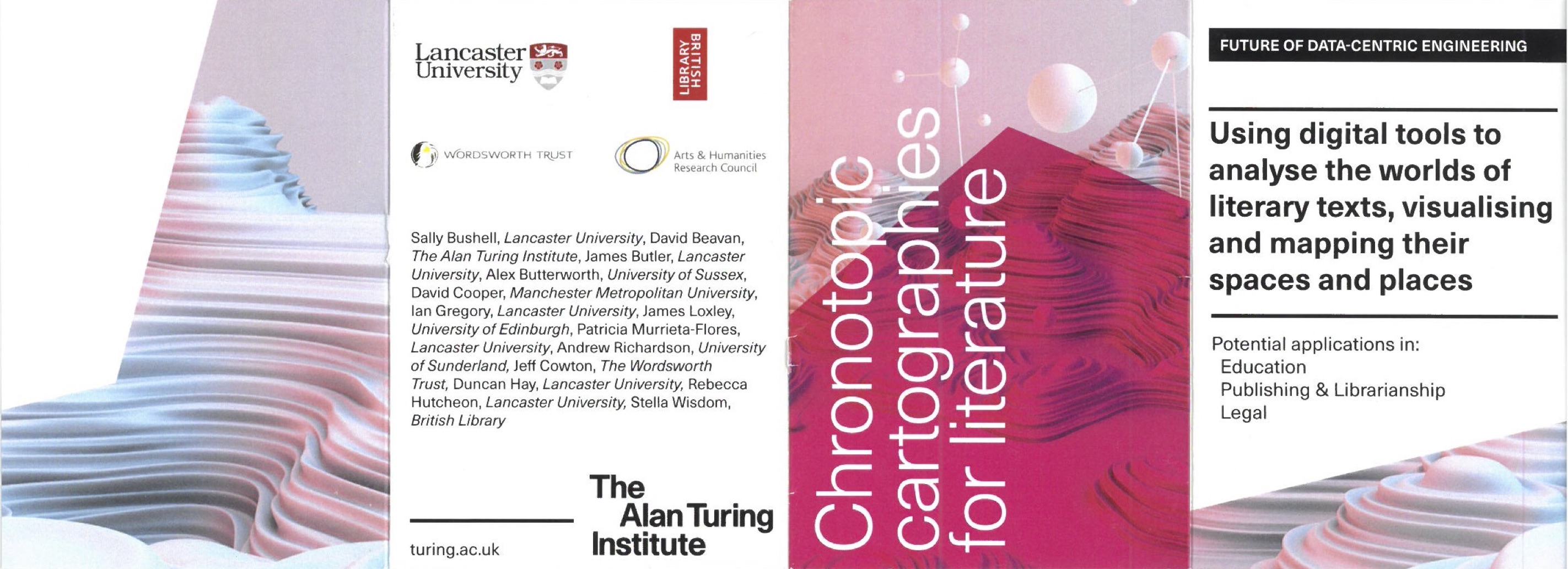
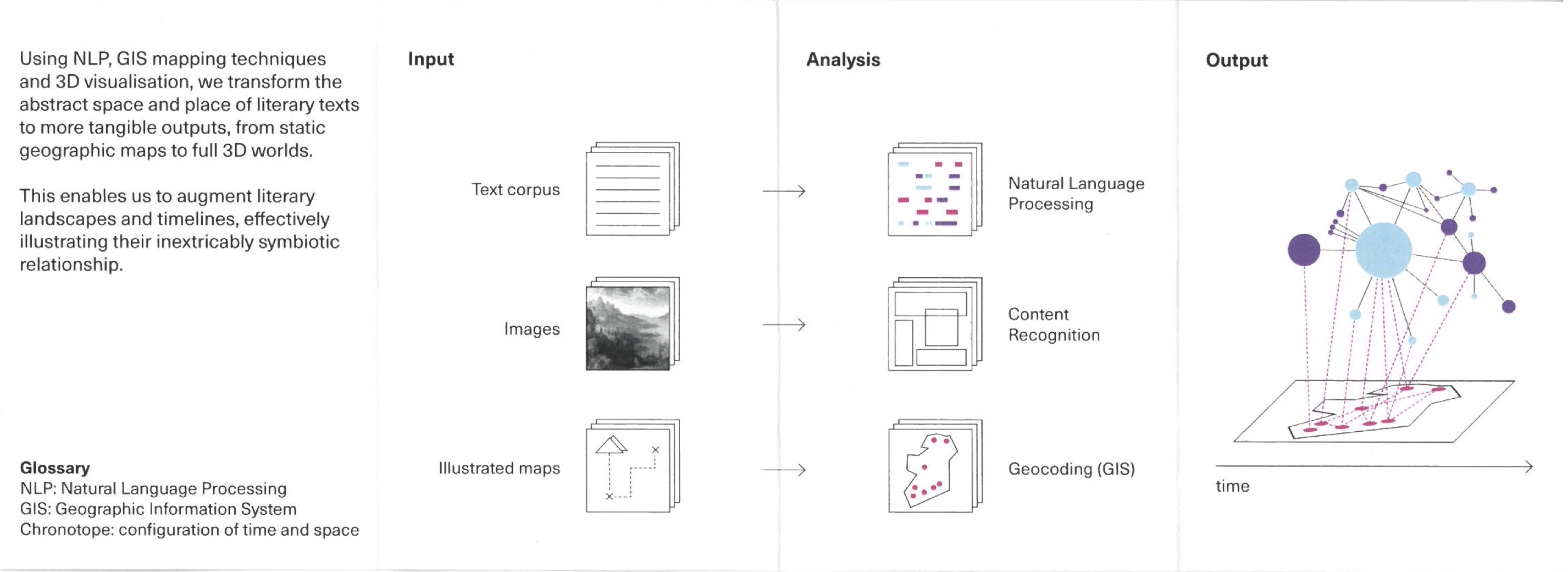
Please feel free to print off copies for display/sharing!
Minecraft Day 2019, Lancaster Uni – 08 July 2019
July 10, 2019 | james
Had to believe an entire year has passed, but the project team was really pleased to have the opportunity to bring Minecraft Day back to campus. Showcasing work and research tha utilises Minecraf in some manner, the event was made possible by the generous support of the Alumni Fund.
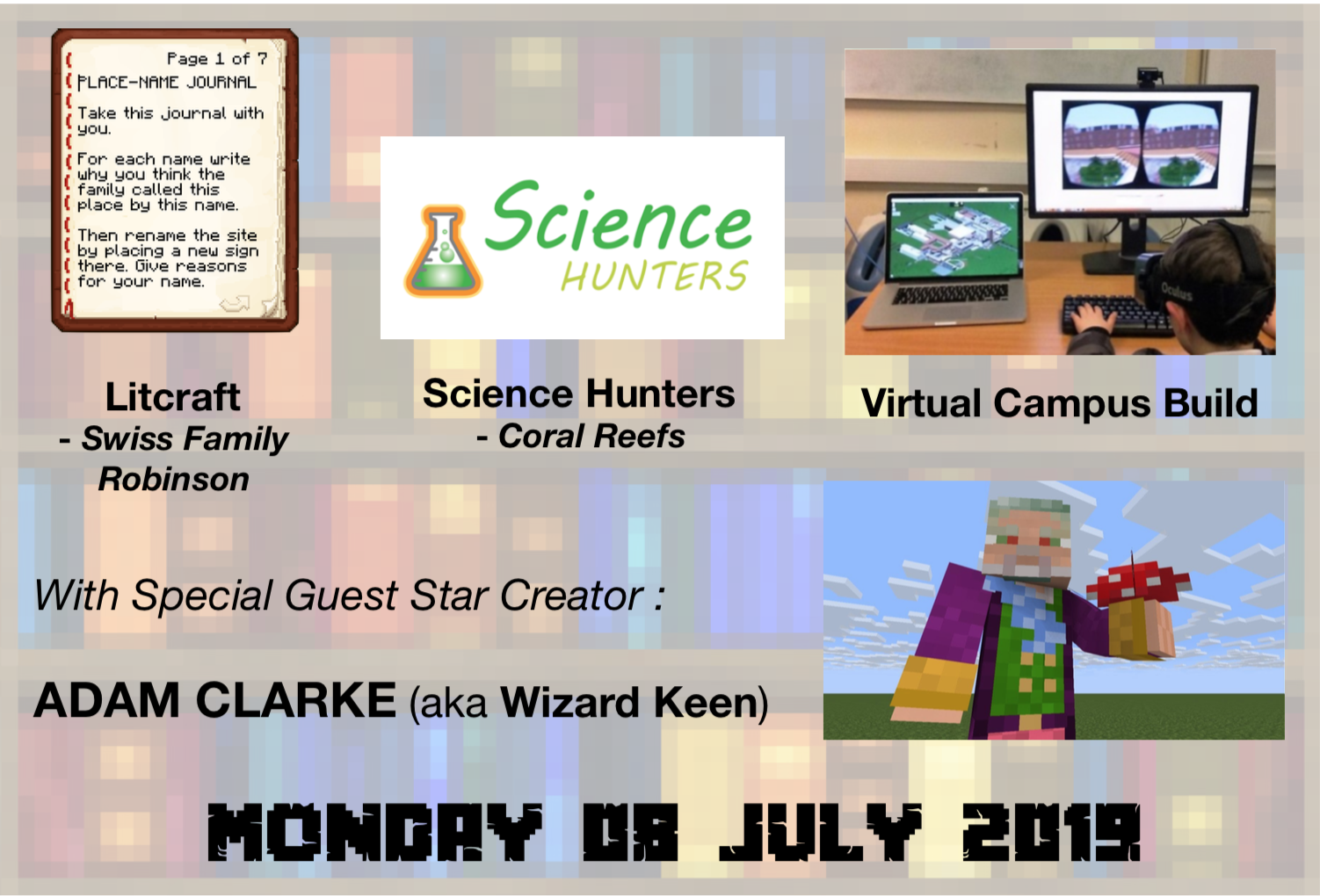
Tailored for a slightly smaller cohort this year, we were delighted to welcome star creator, project friend, and Litcra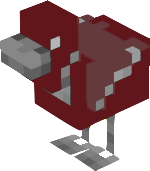 ft partner (more to be announced on that very soon!) Adam Clarke - aka Wizard Keen. And what a great event it was to host (with the added bonus of James' work on a project mascot finally being completed!)
ft partner (more to be announced on that very soon!) Adam Clarke - aka Wizard Keen. And what a great event it was to host (with the added bonus of James' work on a project mascot finally being completed!)
Litcraft trialled our latest release for the first time publicly - a Swiss Family Robinson and Robinson Crusoe double-build. With a real focus on using the maps creatively, and engaging with place-names and naming, this is our strongest release yet. We were delighted to see how well the kids engaged with it - both the reading and the gameplay.
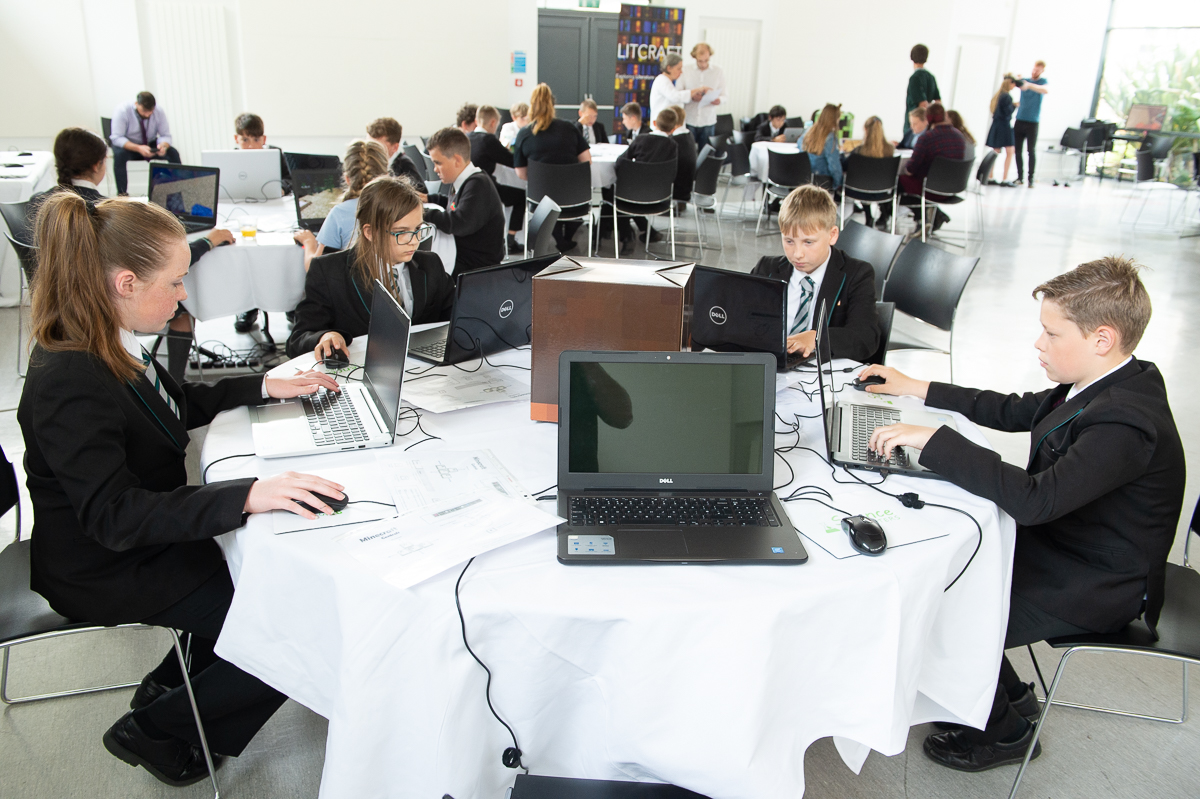
Science hunters similarly ran a new resource, topically focused on coral reefs, their troubled state and regeneration strategies - very powerful lessons. Chris Dixon wowed the kids with a VR set up. And Adam introduced the kids to workshop grand design builds, resulting in some very interesting concepts, as shown below, as well as skin and texture design.
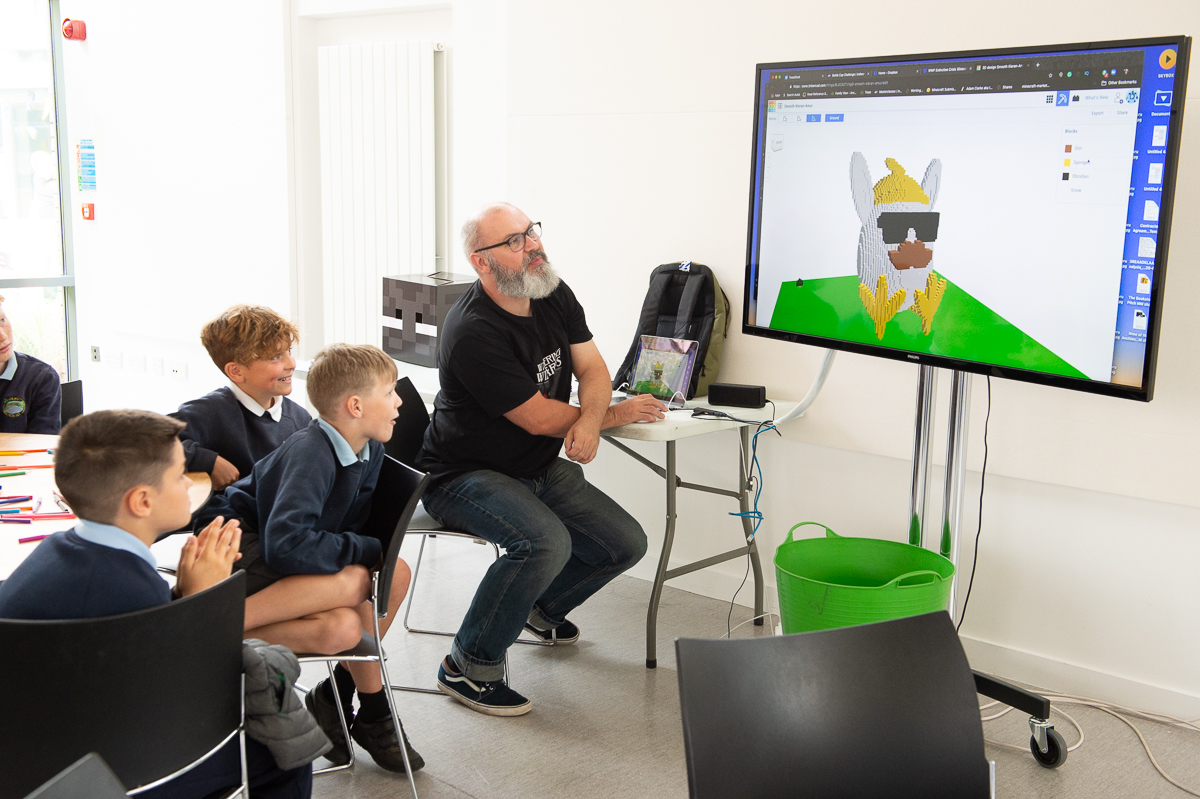
Every session ran smoothly, and by all accounts the kids had a great day - and we couldn't have asked for better behaviour. Of course, we couldn't not end the day with a little gift bag - complete with Lego Minecraft minifig and themed stationary (the teachers were just as excited as the kids, haha!).
Thank you to all involved in helping the day prove such a success - and prove why engagement is so important for research - Dr Dawn Stobbart, the helpers, and the teachers for taking the time and effort to be able to attend.
Geographies of Gaming and VR, 3 July 2019, Birmingham
July 4, 2019 | james
Co-I Ian Gregory introduced Sally and James to an exciting annual symposium of the Digital Geographies Research Group, held at the University of Birmingham - this year focused around VR and public engagement. The event was filled with a diverse range of talks, that covered all manner of applications, including the design of functional realtime city info dashboards, ethongraphies of abaondoned second life-esque worlds, procedural generation and artistic creativity, the 140 years of gamifying Around the World in 80 Days, combining AR, theatre, and escae room-like exeriences... such a variety.
We - of course - took Litcraft, and it was heartening to see quite a few people were already aware of us. Word is spreading!
Sally introduced, for the very first time, our next colloboration - with The Wordsworth Trust, focused around 'Spots of Time'. Hearking back to the original prototype that led to all this, Lakescraft, we cannot wait to unveil more about our plans, alongside two member of the Centre of Ecology and Hyrdology (always wonderful when unexpected collaborations come about) who have made a nicely-scaled and populated map of the Lake District. But more details soon!
In addition to the paper, the organisers kindly allowed us to run a workshop - and for once everyone was familiar with Minecraft (though a few parrots were still accidentally killed instead of tamed). Very encouraging, and some interested names taken for (hopefully) future contact.


